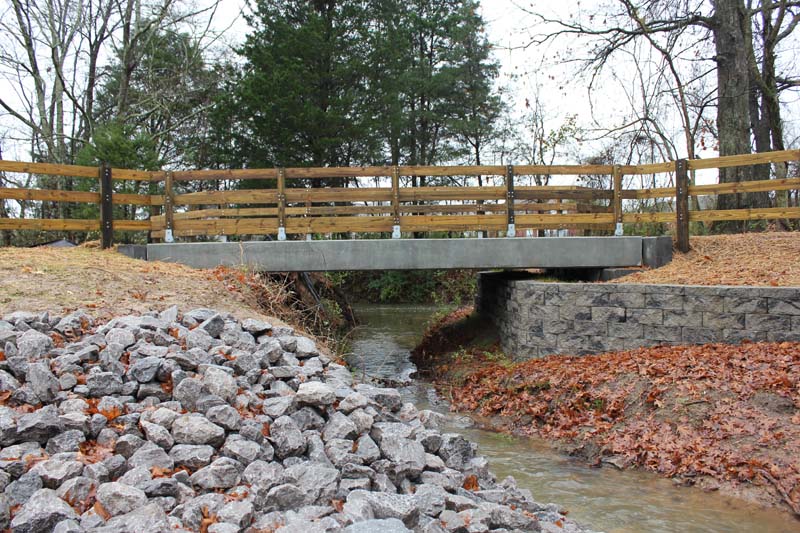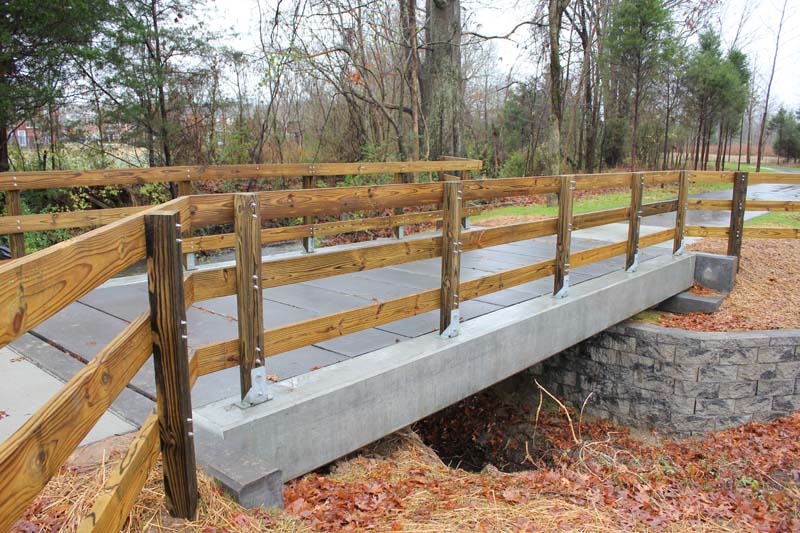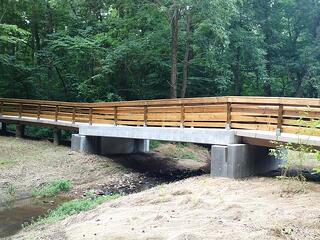PermaTrak Beam Span Length Q&A
We get a lot of questions to our office about what is feasible for the design of concrete boardwalks. Engineers and landscape architects often have a design in mind and want to investigate whether or not PermaTrak would be a good fit for their boardwalk or pedestrian bridge project.
A few questions came in recently regarding beam span lengths and allowable spacing between piers (foundations). I’ve also been asked recently how customized beams impact the total project cost. I’d like to share the questions and my responses with you in case you are faced with similar questions.
Q: What is the largest span you can have between piers on a boardwalk section? We are looking at building a boardwalk in an area where we have sewer coordination and conflicts.
A: When we talk about beam span length at PermaTrak, we are generally referring to the longitudinal spacing – or the distance along the boardwalk centerline. Traditional boardwalks, for example those made of timber, will limit themselves to about 10-12 ft. between piers. Running any longer spans can create structural challenges for those options.
However, our reinforced concrete boardwalk’s inherent strength allows for much more flexibility and can cost-effectively reach 20 ft. between piers. In specific cases, we have been able to stretch the spans even further – up to 45 ft. – which technically makes the structure a bridge. See below for a photo of a 26 ft. PermaTrak bridge which is an example of this type of application.

PermaTrak is designed to assist in challenging elevated boardwalk situations where there may be environmental or man-made elements (like a sewer, wetlands or tree roots) that cannot be disturbed.
Q: Are there standard PermaTrak beam sizes? Or is each job customized?
A: Yes, please see our precast concrete beams section on the concrete boardwalk components page to see details on our standard PermaTrak beam sizes (small, medium and large series). Customized beams are also an option, but it is always recommended to consult with one of our PermaTrak engineers to determine the best solution for your application.
Q: I am looking at a channel crossing of about 30 feet. How many of supports would I need along the bridge run, and what would be the maximum span between supports? What are the cost implications?
For a 30 ft. span crossing, the lowest cost precast concrete boardwalk option would be to use our “small beam” series, which maxes out at a 10 ft. span. In this scenario, you would need abutment components on either side of the channel as well as two supports along the bridge run (one at the 10 ft. mark and another at the 20 ft. mark).
Our PermaTrak “medium beam” series takes you from 10 ft. up to 20 ft. in a single span. If needed, we can produce a 15 ft. beam, for example.
However, just because the PermaTrak precast cost is lower does not always mean the total boardwalk project cost is lower. The foundations can sometimes cost more than the precast components, in which case several options should be considered.
I suggest a full evaluation of the total project cost before deciding upon the precast beam span length.
In summary, PermaTrak can adapt to many different boardwalk designs and span lengths, and we would love to speak with you to see if our concrete boardwalk system would be a good fit for your project. One thing to keep in mind: as beam span length increases, the cross sectional dimensions increase also. This means that you will need to find a balance between foundation design and boardwalk design.
We are always willing to help with engineering support, drawings, and cost evaluations for your project, so give us a call, and we can get started!


